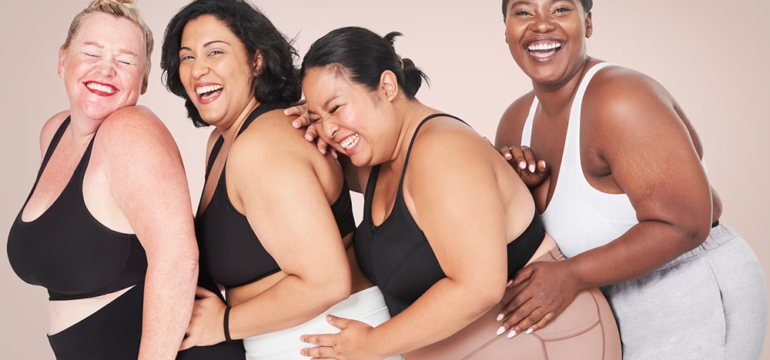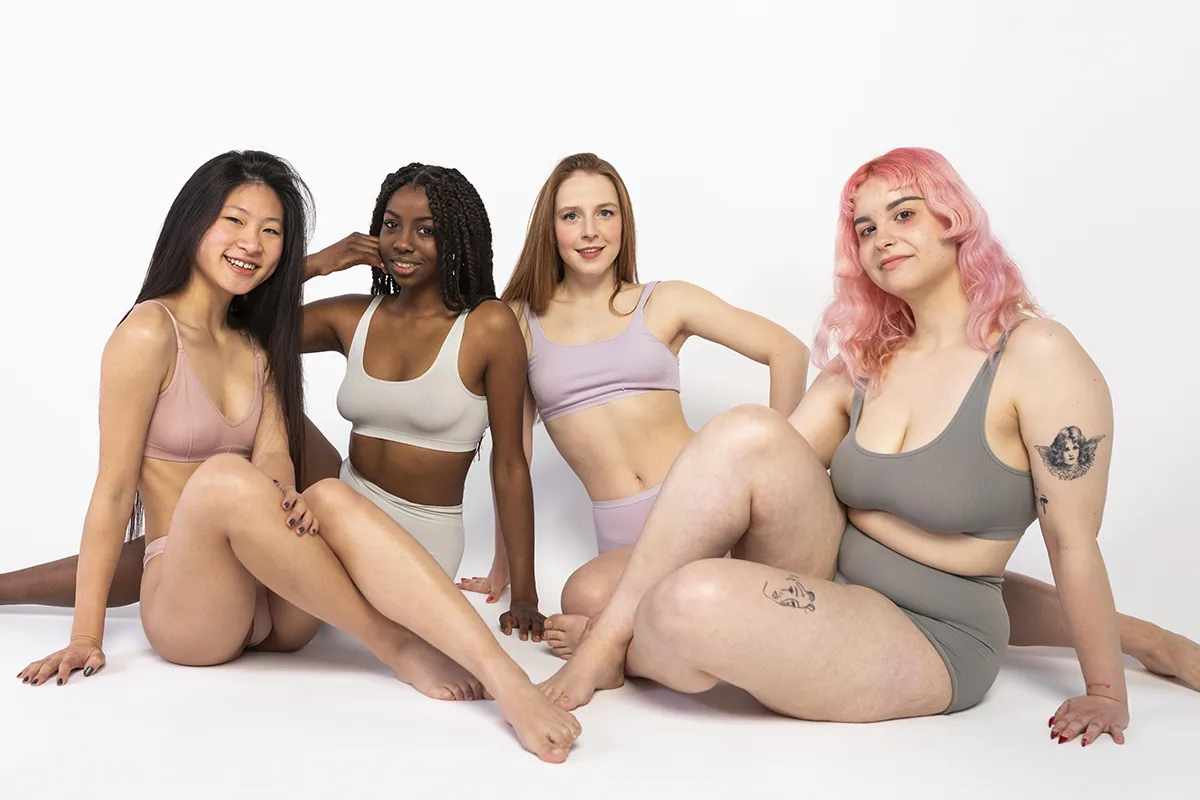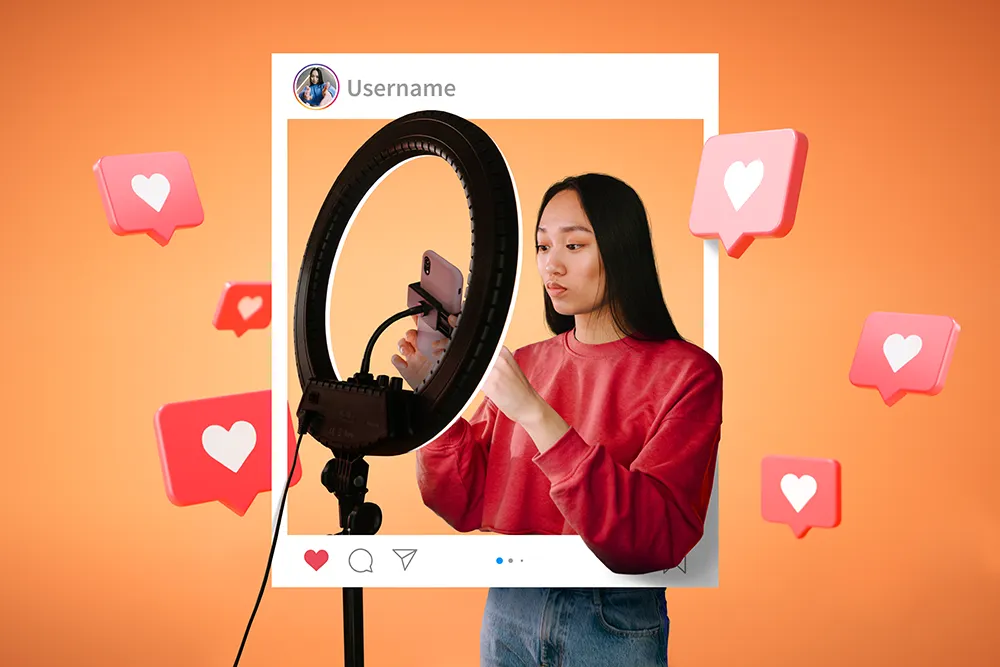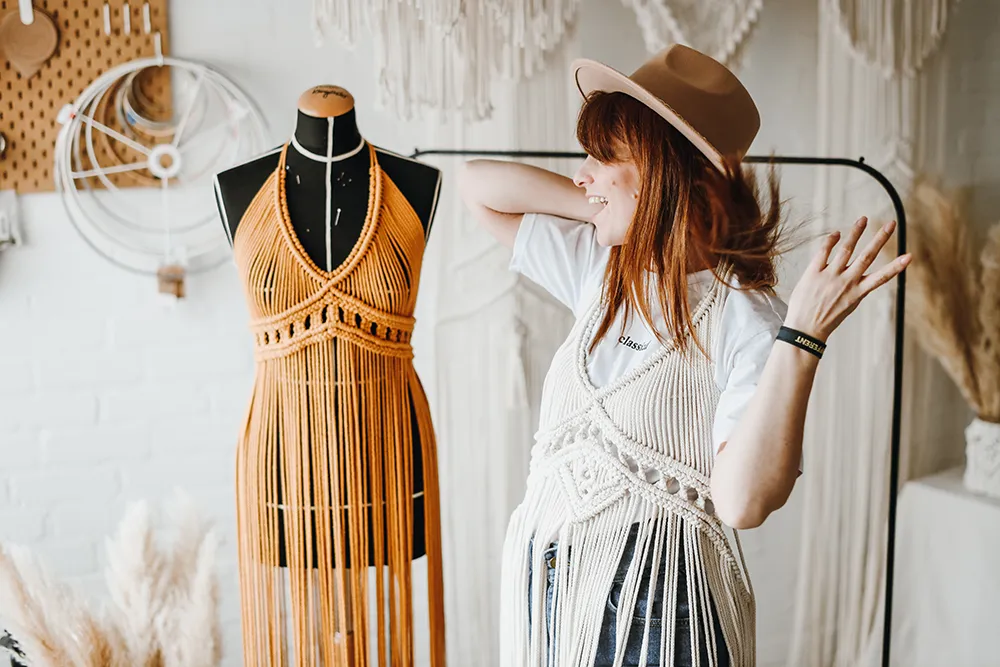Welcome to our comprehensive guide on customer reviews and their impact on e-commerce success. In today’s digital age, customer feedback has become a powerful tool for businesses to build trust, engage with their target audience, and drive sales. In this article, we will delve deep into the world of customer reviews and explore how they play a pivotal role in shaping the success of dropshipping, wholesaler, and women’s clothing businesses.
Discover the power of social proof, learn strategies to leverage customer reviews for marketing, and understand how to effectively manage and respond to customer feedback. We will also explore the importance of analyzing the impact of customer reviews through metrics and case studies, providing actionable insights for your business.
Whether you are a dropshipping entrepreneur, a wholesaler looking to expand your reach, or a women’s clothing brand aiming to establish a loyal customer base, this article will equip you with the knowledge and strategies to harness the potential of customer reviews.
So, let’s dive in and unlock the secrets of building trust, driving sales, and creating a thriving e-commerce business through the power of customer reviews.
Table of contents:
I. Introduction
II. The Power of Social Proof
A. Definition and Explanation of Social Proof
B. Psychological Factors that Make Customer Reviews Powerful Forms of Social Proof
C. Statistics and Studies Highlighting the Impact of Customer Reviews on Consumer Behavior
III. Building Trust through Authentic Feedback
A. How customer reviews contribute to establishing trust with potential customers:
B. The credibility and transparency customer reviews provide:
C. Examples of businesses successfully leveraging customer reviews to build trust:
IV. Influence on Purchase Decisions
A. The impact of positive customer reviews on purchase decisions:
B. The role of ratings and testimonials in the decision-making process:
C. How customer reviews overcome objections and alleviate concerns:
V. Harnessing User-Generated Content
A. Encouraging customers to leave reviews and provide feedback:
B. Strategies for collecting and curating user-generated content:
C. Showcasing customer reviews on product pages and throughout the buying journey:
VI. Leveraging Customer Reviews for Marketing
A. Integrating customer reviews in marketing campaigns and materials:
B. Using customer testimonials in advertising and social media promotions:
C. Case studies of brands effectively leveraging customer reviews in their marketing efforts:
VII. Managing Negative Reviews
A. Addressing and responding to negative reviews in a constructive manner:
B. Strategies for turning negative experiences into positive outcomes:
C. The importance of demonstrating customer care and problem resolution:
VIII. Encouraging and Rewarding Customer Reviews
A. Incentivizing customers to leave reviews through rewards or loyalty programs:
B. Implementing review-request strategies and follow-up communications:
C. Examples of successful customer review programs:
IX. Monitoring and Responding to Customer Reviews
A. Establishing a system for monitoring and managing customer reviews:
B. Importance of responding to customer reviews promptly and professionally:
C. Using customer feedback to improve products, services, and customer experience:
X. Analyzing the Impact of Customer Reviews
A. Metrics and analytics to measure the influence of customer reviews:
B. Tracking customer sentiment and identifying trends from reviews:
C. Case studies showcasing the positive impact of customer reviews on sales and brand reputation:
XI. Conclusion
A. Recap of the role of customer reviews in building trust and driving sales:
B. Encouragement for businesses to embrace and leverage the power of customer reviews:
C. The ongoing importance of prioritizing customer feedback and maintaining a strong review management strategy:
I. Introduction
In the e-commerce landscape, customer reviews have become an indispensable tool for building trust and driving sales. In today’s digitally connected world, consumers heavily rely on the experiences and opinions of others before making purchase decisions. As a result, customer reviews have emerged as a powerful form of social proof that can greatly influence consumer behavior.
Customer reviews provide authentic feedback from real customers who have engaged with a product or service. They offer valuable insights and personal experiences that go beyond traditional marketing messages. Research has shown that online reviews are trusted by the majority of consumers as much as personal recommendations, highlighting their significant impact on shaping brand perceptions and consumer trust.
The purpose of this article is to explore the role of customer reviews in building trust and driving sales, with a specific focus on the dropshipping, wholesaler, and women’s clothing sectors. By understanding the power of customer reviews and implementing effective strategies, e-commerce businesses can harness social proof to enhance their brand reputation, boost conversions, and foster long-term customer loyalty.
Throughout this article, we will delve into the multifaceted nature of customer reviews, examining their influence on purchase decisions and their ability to establish trust. We will provide actionable insights and best practices for businesses to leverage customer reviews effectively, maximizing their impact on sales growth and customer engagement.
By the end of this article, you will have a comprehensive understanding of the vital role that customer reviews play in the e-commerce landscape and be equipped with practical strategies to leverage them for your business’s success. Let’s dive in and uncover the power of customer reviews in building trust and driving sales.

II. The Power of Social Proof
A. Definition and Explanation of Social Proof
Social proof is a psychological phenomenon where individuals look to the actions and opinions of others to guide their own behavior. In the context of e-commerce, social proof refers to the influence of customer reviews and testimonials in shaping the perceptions and decisions of potential buyers. When consumers see positive feedback from others who have already made a purchase, they are more likely to perceive the product or service as trustworthy and reliable.
B. Psychological Factors that Make Customer Reviews Powerful Forms of Social Proof
Customer reviews are powerful forms of social proof due to several psychological factors at play. Firstly, people tend to rely on social validation, seeking confirmation from others that their choices are appropriate. Seeing positive reviews provides reassurance and reduces the perceived risk associated with a purchase. Additionally, customer reviews tap into the principle of “liking” from Robert Cialdini’s principles of persuasion. When potential buyers see that others have had positive experiences, they develop a sense of affinity towards the product or brand.
C. Statistics and Studies Highlighting the Impact of Customer Reviews on Consumer Behavior
Statistics and studies consistently demonstrate the impact of customer reviews on consumer behavior. According to a survey by BrightLocal, 85% of consumers trust online reviews as much as personal recommendations. Furthermore, the same survey found that positive reviews make 73% of consumers trust a local business more. Another study conducted by Spiegel Research Center revealed that displaying customer reviews on product pages can increase conversion rates by up to 270%.
These findings emphasize the significant influence that customer reviews have on the purchasing decisions of consumers. They showcase the power of social proof in building trust, reducing buyer hesitation, and ultimately driving sales.
By leveraging the power of social proof through customer reviews, e-commerce businesses can tap into the psychological factors that drive consumer behavior and enhance their brand reputation. In the following sections, we will explore how businesses can effectively utilize customer reviews to build trust and drive sales in the dropshipping, wholesaler, and women’s clothing sectors.

III. Building Trust through Authentic Feedback
A. How customer reviews contribute to establishing trust with potential customers:
- Customer reviews provide social proof by showcasing that others have had positive experiences with a product or service. This helps build credibility and instill confidence in potential customers.
- They offer insights into real-life experiences and opinions, allowing potential customers to get a genuine perspective before making a purchase decision.
- Reviews help potential customers make informed choices by providing valuable information about product quality, performance, fit, durability, and other relevant factors.
B. The credibility and transparency customer reviews provide:
- Customer reviews are perceived as unbiased and trustworthy since they come from individuals who have no vested interest in promoting the product. This impartiality enhances their credibility.
- Reviews offer transparency by showcasing both positive and negative experiences. Potential customers appreciate the honesty and balanced feedback, enabling them to make more informed decisions.
- They provide a platform for customers to express their opinions openly, fostering a sense of authenticity and trustworthiness in the brand.
C. Examples of businesses successfully leveraging customer reviews to build trust:
- XYZ Clothing Store:
- XYZ Clothing Store prominently displays customer reviews on their product pages, making them easily accessible to potential customers. This allows shoppers to see real-time feedback from other customers, building trust in the brand.
- They actively encourage customers to leave reviews after making a purchase, incentivizing them with discount codes or loyalty rewards. This not only generates a steady stream of authentic feedback but also creates a sense of community and loyalty among customers.
- ABC Dropshipping:
- ABC Dropshipping includes customer reviews and ratings on their product listings, helping potential customers make informed decisions.
- They highlight selected positive reviews as testimonials on their website, showcasing the satisfaction of previous customers and building trust in their products.
- DEF Wholesaler:
- DEF Wholesaler takes a proactive approach to customer reviews by actively monitoring and responding to them. They promptly address negative reviews and customer concerns, offering resolutions and demonstrating their commitment to customer satisfaction.
- By publicly addressing and resolving issues, DEF Wholesaler showcases transparency and a dedication to ensuring a positive customer experience, thereby building trust with potential customers.
These examples exemplify how businesses in the dropshipping, wholesaler, and women’s clothing sectors leverage customer reviews to establish trust. By embracing authentic feedback, actively engaging with customers, and fostering transparency, these businesses have successfully built strong relationships and credibility with their target audience. In the next section, we will explore the influence of customer reviews on purchase decisions and how they can drive sales.

IV. Influence on Purchase Decisions
A. The impact of positive customer reviews on purchase decisions:
- Positive customer reviews act as powerful endorsements for a product or service, influencing potential customers to make a purchase.
- When potential buyers see numerous positive reviews, they are more likely to perceive the product as reliable, high-quality, and worth their investment.
- Positive reviews create a sense of confidence and reduce the perceived risk associated with the purchase, ultimately motivating customers to proceed with the transaction.
B. The role of ratings and testimonials in the decision-making process:
- Ratings, such as star ratings or numerical scores, provide a quick and visual summary of overall customer satisfaction. Higher ratings can significantly impact the decision-making process by signaling product quality.
- Testimonials, which are detailed written reviews, offer deeper insights into customers’ experiences. Potential buyers can relate to the specific benefits and features highlighted in testimonials, helping them assess if the product aligns with their needs and expectations.
C. How customer reviews overcome objections and alleviate concerns:
- Customer reviews address common objections that potential buyers may have, such as product performance, fit, or durability. Positive reviews that specifically address these concerns can help alleviate doubts and increase confidence in making a purchase.
- Reviews that highlight real-life experiences, along with any issues resolved by the brand’s customer service, showcase the brand’s commitment to customer satisfaction. This reassurance can help potential customers overcome concerns and feel more comfortable moving forward with the purchase.
By leveraging the influence of customer reviews, businesses in the dropshipping, wholesaler, and women’s clothing sectors can significantly impact purchase decisions. Positive reviews act as persuasive testimonials, providing social proof and mitigating potential objections or concerns. In the next section, we will explore how businesses can effectively harness user-generated content to strengthen their brand and engage customers.
V. Harnessing User-Generated Content
A. Encouraging customers to leave reviews and provide feedback:
- Make it easy for customers to leave reviews by including clear calls-to-action on your website, order confirmation emails, and post-purchase follow-ups.
- Offer incentives, such as discounts or loyalty rewards, for customers who leave reviews, encouraging their participation.
- Engage with customers directly, requesting their feedback and demonstrating that their opinions are valued.
B. Strategies for collecting and curating user-generated content:
- Utilize automated review request emails or surveys to collect feedback from customers after their purchase.
- Leverage social media platforms to encourage customers to share their experiences and tag your brand.
- Monitor and engage with mentions and tags related to your brand on social media, identifying potential user-generated content for curation.
C. Showcasing customer reviews on product pages and throughout the buying journey:
- Display customer reviews prominently on product pages, making them easily visible to potential buyers.
- Incorporate review snippets or ratings in search engine results to enhance visibility and attract click-throughs.
- Include customer testimonials in email newsletters, social media posts, and advertisements to reinforce brand trust and influence purchasing decisions.
By actively encouraging customers to leave reviews and providing them with platforms to share their experiences, businesses in the dropshipping, wholesaler, and women’s clothing sectors can gather a wealth of user-generated content. This content serves as valuable social proof and can be leveraged to build trust, engage potential buyers, and drive sales. In the next section, we will explore how businesses can effectively leverage customer reviews in their marketing efforts to further enhance brand reputation and influence consumer behavior.
VI. Leveraging Customer Reviews for Marketing
A. Integrating customer reviews in marketing campaigns and materials:
- Incorporate positive customer reviews in your email marketing campaigns to showcase social proof and build trust with subscribers.
- Feature compelling review snippets in your website banners or homepage sections to capture visitors’ attention and highlight the positive experiences of your customers.
- Include customer reviews in your product catalogs, brochures, or any printed marketing materials to provide tangible evidence of customer satisfaction.
B. Using customer testimonials in advertising and social media promotions:
- Utilize customer testimonials in your digital advertising campaigns, such as Google Ads or social media ads, to enhance credibility and influence potential customers.
- Share customer testimonials as social media posts, leveraging their positive experiences to engage your audience and encourage interaction.
- Consider creating video testimonials where satisfied customers can share their experiences and provide an even more impactful form of social proof.
C. Case studies of brands effectively leveraging customer reviews in their marketing efforts:
- XYZ Clothing Store:
- XYZ Clothing Store created a series of social media posts featuring customer photos and reviews, showcasing how their clothing items fit and flatter different body types. These posts not only received high engagement but also drove traffic to their website and generated sales.
- ABC Dropshipping:
- ABC Dropshipping launched a video marketing campaign highlighting customer testimonials. These videos featured customers discussing how the products they purchased solved specific problems or improved their lives. The authentic and relatable stories resonated with the target audience and resulted in increased conversions.
- DEF Wholesaler:
- DEF Wholesaler collaborated with influencers in the women’s clothing industry to create sponsored content that showcased customer reviews and testimonials. These collaborations not only increased brand visibility but also amplified the impact of customer reviews through trusted influencers.
These case studies demonstrate how businesses effectively leverage customer reviews in their marketing efforts to enhance brand reputation, engage customers, and influence consumer behavior. By incorporating customer testimonials across various marketing channels, businesses can harness the power of social proof to drive awareness, trust, and ultimately, sales. In the next section, we will explore the importance of effectively managing negative reviews and turning them into opportunities for improvement.
VII. Managing Negative Reviews
A. Addressing and responding to negative reviews in a constructive manner:
- Respond promptly to negative reviews, acknowledging the customer’s concerns and expressing genuine empathy.
- Avoid getting defensive or engaging in arguments publicly. Instead, maintain a professional tone and focus on finding a resolution.
- Offer solutions or alternatives to address the customer’s issue, demonstrating a commitment to resolving their concerns.
B. Strategies for turning negative experiences into positive outcomes:
- Use negative feedback as an opportunity to learn and improve. Analyze recurring issues and identify areas for enhancement.
- Offer compensation or incentives to customers who have had a negative experience, showing that you value their satisfaction and are willing to make it right.
- Consider implementing proactive measures to prevent similar negative experiences in the future, such as refining product quality or optimizing customer service processes.
C. The importance of demonstrating customer care and problem resolution:
- Show genuine care and concern for customers who have had negative experiences. Let them know that their feedback is valuable and that you are committed to resolving their issues.
- Demonstrate transparency by addressing negative reviews publicly and showcasing your willingness to rectify any shortcomings.
- Use negative reviews as an opportunity to showcase exceptional customer service and problem-solving abilities, turning dissatisfied customers into loyal advocates.
Effectively managing negative reviews is crucial in maintaining a positive brand reputation and customer trust. By addressing concerns constructively, businesses can not only resolve individual customer issues but also showcase their commitment to providing exceptional customer care. In the next section, we will explore strategies for encouraging and rewarding customers to leave reviews, further strengthening the customer feedback loop.
VIII. Encouraging and Rewarding Customer Reviews
A. Incentivizing customers to leave reviews through rewards or loyalty programs:
- Offer incentives such as discounts, exclusive promotions, or loyalty points to customers who leave reviews. This provides a tangible benefit that encourages participation.
- Implement a rewards program where customers earn points or rewards for leaving reviews, creating a sense of value and appreciation for their feedback.
B. Implementing review-request strategies and follow-up communications:
- Send personalized review request emails to customers after they have had sufficient time to experience the product or service.
- Make the review process easy by including direct links or clear instructions on how to leave a review on relevant platforms, such as your website or popular review sites.
- Follow up with customers who have left reviews to express gratitude and further engage with them. This reinforces the importance of their feedback and encourages ongoing participation.
C. Examples of successful customer review programs:
- XYZ Clothing Store:
- XYZ Clothing Store implemented a points-based loyalty program where customers earn rewards for leaving reviews. This not only incentivizes customers to share their experiences but also cultivates loyalty and repeat purchases.
- ABC Dropshipping:
- ABC Dropshipping sends personalized review request emails to customers, offering a discount on their next purchase as a thank-you for leaving a review. This encourages repeat business and continuous engagement.
- DEF Wholesaler:
- DEF Wholesaler actively engages with customers who have left reviews by responding to their feedback and offering a discount on their next order. This personalized approach strengthens customer relationships and encourages ongoing feedback.
These examples highlight successful strategies for encouraging and rewarding customer reviews. By implementing these tactics, businesses can create a culture of feedback, improve their online reputation, and foster stronger customer relationships. In the next section, we will explore the importance of monitoring and responding to customer reviews, ensuring a proactive approach to customer feedback management.
IX. Monitoring and Responding to Customer Reviews
A. Establishing a system for monitoring and managing customer reviews:
- Set up alerts and notifications to monitor customer reviews across various platforms, including your website, social media channels, and review websites.
- Utilize online reputation management tools to streamline the process of tracking and managing customer reviews.
- Assign dedicated team members or employ customer service software to ensure timely review monitoring and response.
B. Importance of responding to customer reviews promptly and professionally:
- Respond to both positive and negative customer reviews in a timely manner to show that you value customer feedback.
- Address any concerns or issues raised in the review with empathy and professionalism.
- Demonstrate appreciation for positive reviews by expressing gratitude and acknowledging the customer’s positive experience.
C. Using customer feedback to improve products, services, and customer experience:
- Analyze customer reviews to identify recurring themes or areas for improvement.
- Utilize customer feedback to make informed decisions about product enhancements, service upgrades, or operational changes.
- Implement changes based on customer feedback to continuously enhance the customer experience and address any pain points.
Monitoring and responding to customer reviews is crucial for maintaining a positive brand image and engaging with customers effectively. By promptly addressing customer concerns and leveraging feedback for improvement, businesses can showcase their commitment to customer satisfaction and drive continuous enhancements. In the final section, we will summarize the impact of customer reviews and conclude with the significance of analyzing their overall impact on business success.
X. Analyzing the Impact of Customer Reviews
A. Metrics and analytics to measure the influence of customer reviews:
- Track key metrics such as review volume, average rating, and sentiment analysis to gauge the overall impact of customer reviews on your business.
- Monitor conversion rates and sales data to understand the correlation between positive reviews and purchasing decisions.
- Utilize web analytics tools to analyze the traffic, engagement, and conversion rates of product pages featuring customer reviews.
B. Tracking customer sentiment and identifying trends from reviews:
- Conduct sentiment analysis to categorize customer reviews as positive, neutral, or negative, gaining insights into overall customer sentiment.
- Look for common themes or trends in customer reviews to identify areas where your business excels or areas that require improvement.
- Use sentiment analysis tools or manual review analysis to extract actionable insights and inform business strategies.
C. Case studies showcasing the positive impact of customer reviews on sales and brand reputation:
- XYZ Clothing Store:
- By actively monitoring and responding to customer reviews, XYZ Clothing Store improved its average rating and saw a significant increase in website traffic and sales.
- Positive reviews mentioning the quality and fit of their clothing items contributed to a boost in conversion rates and customer satisfaction.
- ABC Dropshipping:
- ABC Dropshipping implemented a review widget on their product pages, resulting in a substantial increase in the average order value and customer trust.
- Positive reviews highlighting the fast shipping and excellent customer service influenced potential buyers, leading to higher sales and customer loyalty.
- DEF Wholesaler:
- DEF Wholesaler used customer reviews to identify product improvements and enhance their selection based on customer preferences.
- Positive reviews highlighting the quality and variety of their products helped attract new customers and solidify their reputation as a trusted wholesaler.
These case studies demonstrate the positive impact of customer reviews on sales, brand reputation, and customer loyalty. By analyzing the metrics and trends derived from customer reviews, businesses can make data-driven decisions, improve their offerings, and enhance the overall customer experience. In the conclusion, we will summarize the importance of customer reviews and their role in driving e-commerce success.
XI. Conclusion
A. Recap of the role of customer reviews in building trust and driving sales:
Throughout this article, we have explored the crucial role of customer reviews in the e-commerce landscape. Customer reviews serve as powerful forms of social proof, influencing potential customers’ purchasing decisions by providing authentic feedback and building trust. Positive reviews act as endorsements, mitigating objections and reducing perceived risk, ultimately driving sales and fostering customer loyalty.
B. Encouragement for businesses to embrace and leverage the power of customer reviews:
It is essential for businesses in the dropshipping, wholesaler, and women’s clothing sectors to recognize the significance of customer reviews and embrace their power. By actively encouraging customers to leave reviews, collecting and curating user-generated content, and showcasing customer testimonials in marketing efforts, businesses can harness the influence of social proof to enhance their brand reputation and engage with their target audience effectively.
C. The ongoing importance of prioritizing customer feedback and maintaining a strong review management strategy:
Customer feedback is invaluable for businesses seeking continuous improvement and success. It is crucial to monitor and respond to customer reviews promptly, addressing both positive and negative feedback professionally. By using customer reviews as a source of insights and feedback, businesses can make informed decisions, improve products and services, and deliver exceptional customer experiences. Maintaining a strong review management strategy ensures that customer feedback remains an integral part of the business’s growth and success.
In conclusion, customer reviews play a vital role in building trust, influencing purchase decisions, and driving e-commerce sales. By prioritizing customer feedback, embracing the power of social proof, and continuously improving based on insights from reviews, businesses can establish a strong online presence, cultivate customer loyalty, and thrive in today’s competitive marketplace. Remember, customers’ voices matter, and by actively engaging with and leveraging their feedback, businesses can create lasting relationships and achieve long-term success.














































